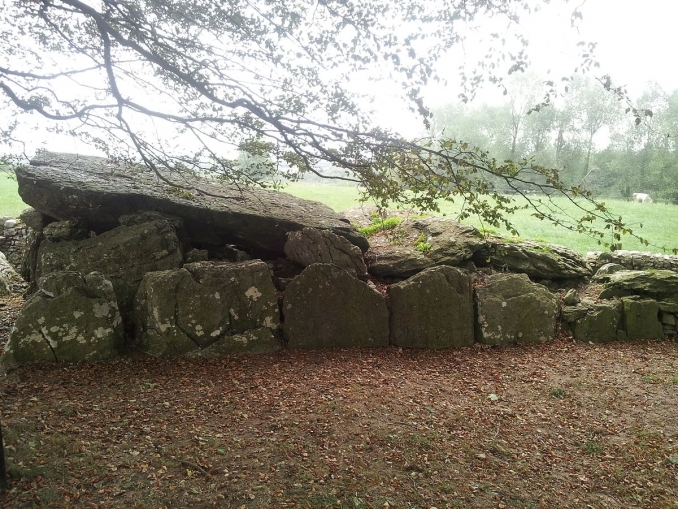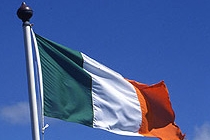Labbacallee Wedge Tomb - Leaba Chaillí

Labbacallee wedge tomb (Irish: Leaba Chaillí) is a located about 8 km (5.0 mi) north-west of the town of Fermoy (Irish: Mainistir Fhear Maí) and 2 km (1.2 mi) south-east of Glanworth, County Cork, Ireland (Irish: Gleannúir, Contae Chorcaí, Éire). This is the largest Irish Wedge Tomb consisting of three very large capstones with a big rectangular chamber with a smaller one behind a slab. The walls are very thick with a capstone sloping downwards at the back. In front there is a large rectangular antechamber. It is estimated to date from about 2300 BC.
Local folklore associates the site with the Celtic Goddess Cailleach Bheur. In Gaelic mythology (Irish, Scottish and Manx) Cailleach is a creation goddess. She is commonly known as the Cailleach Bhéara and in Scotland also as Beira, Queen of Winter. In partnership with the goddess Brìghde, they rule the seasons. Cailleach governs the winter months between Samhainn (1 November ) and Bealltainn (1 May), while Brìghde rules the summer months between Bealltainn and Samhainn. It is said that Cailleach carries a staff that freezes the ground.
An excavation of the tomb was carried out in 1934. The smallest chamber was filled with earth, stones, ash and the bones of animals and humans. A skeleton of a woman was found. The woman’s skull was later found upright in the large main chamber. Fragments of a late Stone Age decorated pot was also found during the excavation. These type of grave are known as Wedge tombs because of their shape. They were built between the Irish late Neolithic and middle Bronze Ages which dates them to about 2500 to 2000BC.
Image: Image: Courtesy of Wikimedia Commons File:11. Labbacallee Wedge Tomb, Co. Cork.jpg
Celtic nation:
- Ireland
Itinerary:
- Ireland Munster south
Place type:
- Ancient site





